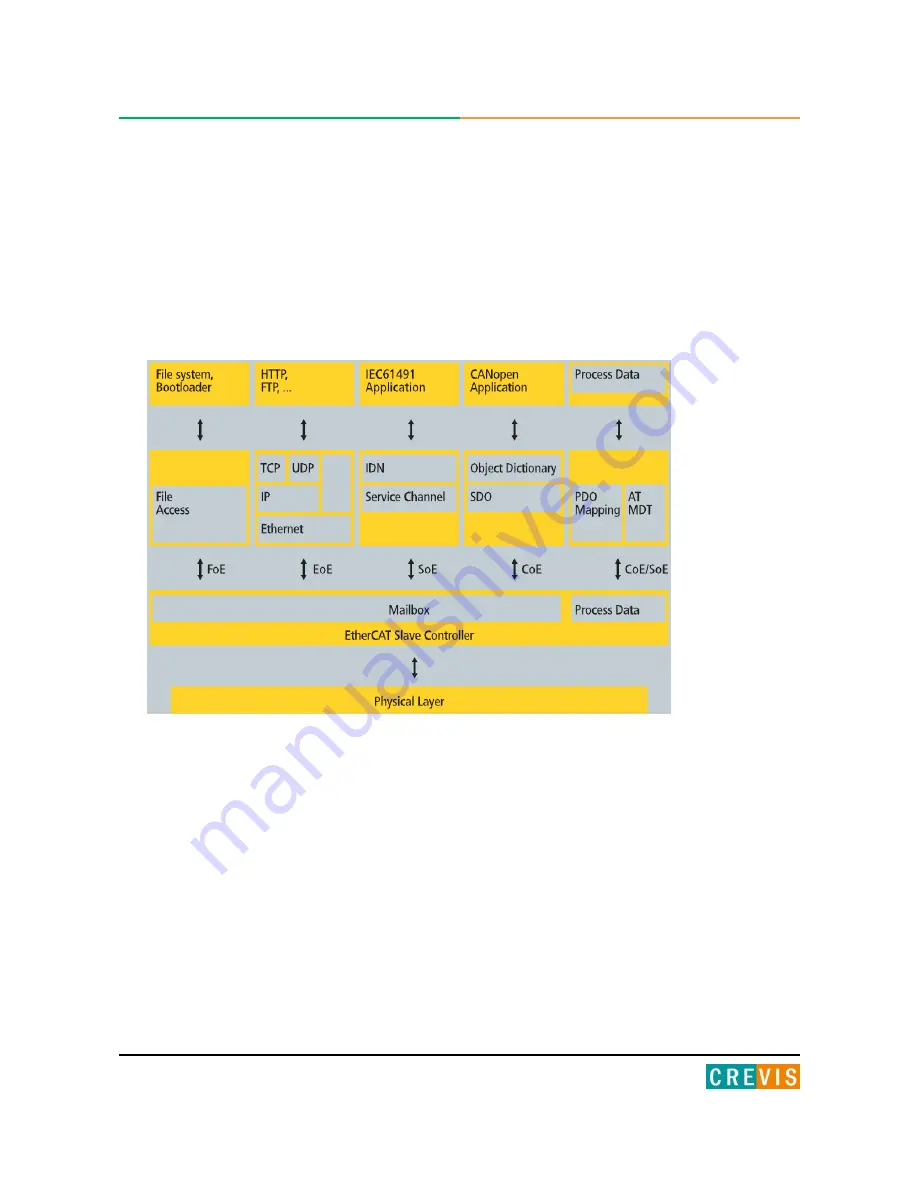
23
FnIO EtherCAT Network Adaptor NA-9286
FnIO S-Series
Copyright(C) CREVIS Co.,Ltd Support +82-31-899-4599 URL : www.crevis.co.kr
6.3.
EtherCAT Mailbox
The device profiles describe the application parameters and the functional behavior of the devices including the
device class-specific state machines. For many device classes, fieldbus technology already offers reliable device
profiles, for example for I/O devices, drives or valves. Users are familiar with these profiles and the associated
parameters and tools. No EtherCAT-specific device profiles have therefore been developed for these device classes.
Instead, simple interfaces for existing device profiles are being offered (see Fig. 1).
This greatly assists users and device manufacturers alike during the migration from the existing fieldbus to
EtherCAT. At the same time the EtherCAT specification keeps it simple because all the protocols are optional.
The device manufacturer only has to implement the protocol that the device application needs.
<Fig. 1> Several Device Profiles and Protocols can co-exist side by side
CAN application layer over EtherCAT (CoE)
CANopen® device and application profiles are available for a wide range of device classes and applications,
ranging from I/O components, drives, encoders, proportional valves and hydraulic controllers to application
profiles for plastic or textile machinery, for example. EtherCAT can provide the same communication
mechanisms as the familiar CANopen [1] mechanisms: object dictionary, PDO (process data objects) and SDO
(service data objects) – even the network management is comparable. EtherCAT can thus be implemented with
minimum effort on devices equipped with CANopen. Large parts of the CANopen firmware can be reused.
Objects can optionally be expanded in order to account for the larger bandwidth offered by EtherCAT.
<Refer to 6.4>







































